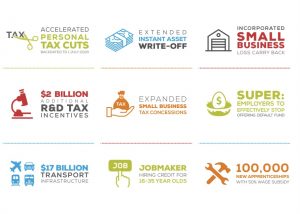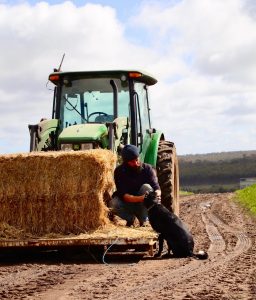Federal Budget 2020: What it means for you

The Federal Budget was released on Tuesday 6th October. We have summarised what we feel is most relevant information for clients of Porters CA. If you would like to read more about the “Winners and Losers” of the Australian Federal Budget for 2020 click here.
Key Points:
- Tax cuts for workers – more money in pockets for more Australians.
- JobMaker Hiring Credit scheme – businesses supported for hiring employees aged 16-35 who were on JobSeeker or who meet other criteria in the last 3 months.
- Asset write off – businesses that make new investments will be able to write off the entire cost in one year, rather than having the asset depreciate over several years.
- Cash payments for pensioners.
- COVID-19 health measures, money for aged care and NDIS.
- Mental health support increases with more to come.
- Some support for women announced.
- Funding for infrastructure and construction.
- Agriculture investment and an extension to the on farm water management rebates.
- No changes to JobKeeper or JobSeeker.
At this stage, there is no rush for immediate action. We recommend taking the time to think through where you want your future to go and only then do we overlay the tax laws and Budget announcements to see how we can help your position to improve.
Tax Cuts
The Government will bring forward its planned tax cuts meaning millions of Australians will have more money in their pockets, potentially from the end of October. These tax cuts were scheduled to start in July 2022 but will be brought forward and backdated to July this year.
- Under the plan, the upper limit of the 19% personal income tax bracket will rise from $37,000 to $45,000 and the 32.5% marginal tax rate upper threshold will lift from $90,000 to $120,000.
- The tax plan means people who earn between $45,000 and $90,000 will take home an additional $1,080 this financial year.
- Workers who earn more than $90,000 will take home up to $2,565 extra, with people earning more than $120,000 receiving the maximum benefit. This will create useful tax planning benefits for some business clients.
- The low and middle-income tax offset, currently worth $255 for a worker on $37,000 and $1,080 for those earning between $48,001 and $90,000, will also remain.
Work out how much you’ll save from these tax cuts with this calculator.
Asset write off for businesses
Treasurer Josh Frydenberg said the write off was good news for “99% of businesses”. From Tuesday 5th October, businesses with a turnover of up to $5 billion will be able to write off the full value of any new eligible asset they purchase between now and 30 June 2022 in addition to the instant asset write off for assets up the $150,000 (including second hand assets) continuing until 30 June 2021.
This means businesses that make new investments will be able to write off the entire cost in one year, rather than having the asset depreciate over several years. For companies (but unfortunately not trusts, partnerships or sole traders) that result in a loss from this process, there is a possibility of claiming losses against previous taxed profits.
If your business is in need of a new car, truck, machinery, computer, phone or other business essential, instant asset write-offs for assets will be a welcome bonus.
Instant asset write off and new employee subsidies?
A bargain is not a bargain unless you need it.

Farmers
Farming has not been overlooked in the budget with $328.4 million over four years to help “bust congestion” in the regulation of farm exports. There is also $50 million to help upgrade on-farm water infrastructure.
In an attempt to get young Australians to move to rural areas and take up positions often held by international backpackers, the government has also announced $17.4 million spent on ‘relocation assistance to take up a job’ in rural areas.
Construction
The $688 million HomeBuilder scheme gives cash grants for people to renovate or build new homes. There has been a massive uptake in Western Australia with concerns now turning finding enough building and trades people and an uplift in the value of vacant land.
Builders will also benefit from extra support for first home buyers to encourage them to buy new houses and stimulate construction.
Manufacturing
$1.3 billion has been allocated to boosting Australia’s manufacturing sector and securing supply lines. The six areas of focus are defence, space, medicine and medical products, food and beverages, resources technology and recycling and clean energy. The aim is to create jobs across the country and help the economy recover, as well as help Australia become more self-sufficient in future disasters.
JobMaker Hiring Credit scheme
While there are no changes to the JobKeeper scheme set to send in March 2021, a fresh wage subsidy program called the JobMaker Hiring Credit has been announced.
The JobMaker Hiring Credit will partially subsidise the wages of young employees who are hired from 7th October 2020. As always, there are some conditions for both employers and employees to meet.
Employers will be able to claim $200 each week for every eligible employee hired after 7th October 2020 aged between 16 and 29, and $100 each week for every employee aged between 30 and 35.
Employees will also need to:
- Have been on JobSeeker, Youth Allowance or the Parenting Payment for at least one of the past three months
- Begin working at the claiming business between 7th October 2020 and 6th October 2021
- Work an average of at least 20 hours a week over the reporting period
No changes to JobKeeper or JobSeeker
JobKeeper
The JobKeeper scheme is set to end on the 28th March 2021 as announced previously.
JobSeeker
More announcements surrounding JobSeeker are expected before the end of the year, so we will keep you updated.
As it stands, the Government isn’t planning on increasing the base rate of the JobSeeker unemployment benefit. The additional coronavirus supplement, currently $250 a fortnight, will end at the end of December, returning the benefit to its pre-pandemic rate.
Women
A $240 million Women’s Economic Security Statement was unveiled in the budget that includes funding to help women in male-dominated industries like construction, more co-funded grants for women-founded start-ups, a focus on encouraging girls and women to pursue careers in STEM and more for Respect@Work council to tackle sexual harassment in workplaces.
Another part of the Women’s Economic Security Statement is a change to the work test for paid parental leave to help people who might’ve been found ineligible because of the COVID-19 pandemic.
The budget does not include any immediate assistance for women looking for work now, with much of the other assistance going to industries like construction.
Payments for pensioners
Tax-free payments of $250 will be made to pensioners and others on government support, including those on a Disability Support Pension, Carer Allowance. Find the full list here. The payments will roll out in December 2020 and March 2021.
Mental Health
The mental toll of the pandemic and the associated resulting lockdowns and restrictions has been recognised and the Government has extended a few key services. From Tuesday 5th October, the number of Medicare-funded psychological services doubled from 10 to 20.
This comes after the Government announced subsidised telehealth services, including for mental health services, would be extended until the end of March 2021.
Vaccines
As expected, the Government is putting billions towards COVID-19 vaccines, mainly the University of Oxford and the University of Queensland.
Another $10 million is going to the CSIRO to fast-track the development of a vaccine in Australia if and when it becomes available.
Infrastructure
An allocation of $7.5 billion has been announced for national transport infrastructure, aimed at boosting state and territory projects that are currently in the planning phase.
WA will benefit from $1.1 billion in new money to create 6800 jobs and support projects including $88 million for the Reid Highway – West Swan Road interchange and $70 million for Roe Highway widening and Abernethy Road Upgrade. A total of $102.3 million will also be invested into high capacity signalling for Metronet, and $75 million for the Canning Bridge bus interchange.
The Details
The devil is always in the detail. Government announcements frequently have complications that don’t make the headlines and a delay in passing the legislation that transforms a Budget idea into reality. Some announcements never quite make it into practice – changes to Division 7A for company loans to related parties were first raised in the 2016 Budget and have now been deferred for a fifth time.
The team at Tax Banter have a detailed write up of Budget initiatives if you’d like to go digging for more detail for an issue that may affect you.
Get in touch
Got a question? Please don’t hesitate to get in touch. As always, we will keep you informed as more details are released.





